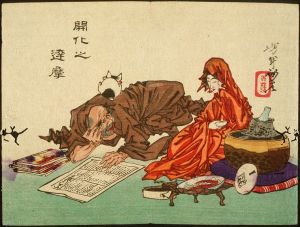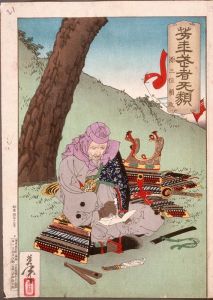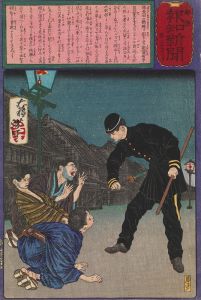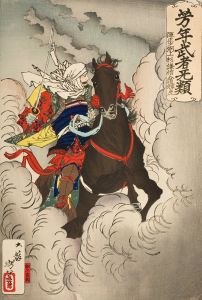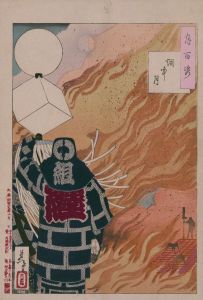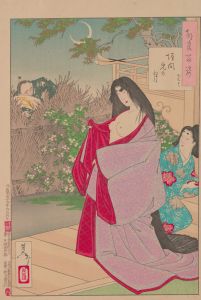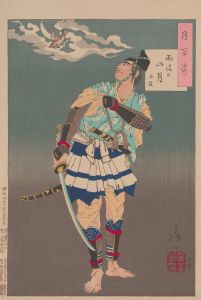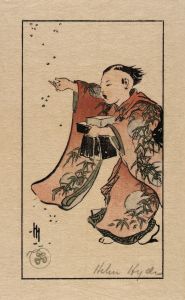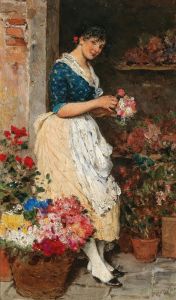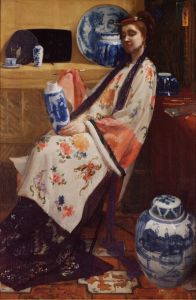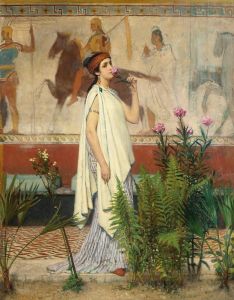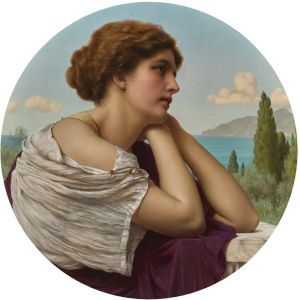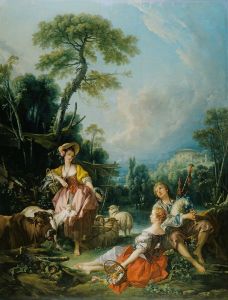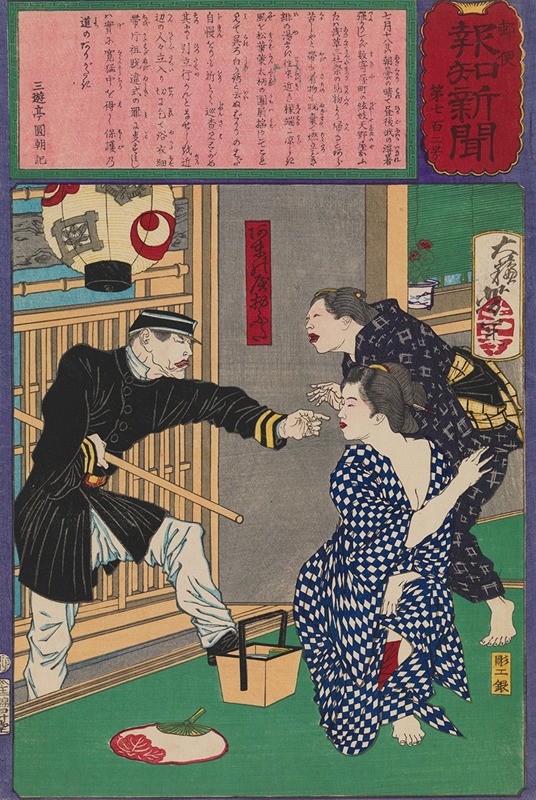
Geisha Ofusa of Amanoya Threatened with Arrest for Indecent Exposure on a Hot Evening
A hand-painted replica of Tsukioka Yoshitoshi’s masterpiece Geisha Ofusa of Amanoya Threatened with Arrest for Indecent Exposure on a Hot Evening, meticulously crafted by professional artists to capture the true essence of the original. Each piece is created with museum-quality canvas and rare mineral pigments, carefully painted by experienced artists with delicate brushstrokes and rich, layered colors to perfectly recreate the texture of the original artwork. Unlike machine-printed reproductions, this hand-painted version brings the painting to life, infused with the artist’s emotions and skill in every stroke. Whether for personal collection or home decoration, it instantly elevates the artistic atmosphere of any space.
Tsukioka Yoshitoshi (1839–1892) was a prominent Japanese artist known for his woodblock prints and paintings, particularly during the late Edo and early Meiji periods. He is often celebrated for his innovative approach to traditional ukiyo-e art, which he revitalized during a time of significant cultural and political change in Japan. One of his notable works is "Geisha Ofusa of Amanoya Threatened with Arrest for Indecent Exposure on a Hot Evening," which reflects both his artistic style and the cultural context of the time.
This artwork is part of Yoshitoshi's series "Eimei nijūhasshūku" (英名二十八衆句), which translates to "Twenty-eight Famous Murders with Verse." The series, created between 1866 and 1867, is known for its dramatic and sometimes gruesome depictions of historical and legendary figures involved in acts of violence or scandal. Each print in the series is accompanied by a kyōka, a type of humorous or satirical poem, which adds a layer of commentary or irony to the depicted scene.
The print featuring Geisha Ofusa is a striking example of Yoshitoshi's ability to capture intense emotion and narrative within a single image. Ofusa was a geisha, a traditional Japanese female entertainer skilled in performing various Japanese arts such as classical music, dance, and games. The scene depicts her in a moment of vulnerability and tension, as she is threatened with arrest for indecent exposure. This situation likely reflects the societal norms and legal constraints of the period, where public decency was strictly regulated, and the lives of geishas were subject to scrutiny and control.
Yoshitoshi's work is characterized by its dynamic composition and expressive use of color and line. In this print, he employs these techniques to convey the drama and urgency of the moment. The use of bold lines and contrasting colors draws the viewer's attention to Ofusa's figure and the expressions of the surrounding characters, enhancing the emotional impact of the scene.
The historical context of the Meiji Restoration, which began in 1868, is essential to understanding Yoshitoshi's work. This period marked the end of Japan's isolationist policies and the beginning of rapid modernization and Westernization. Traditional roles and cultural practices, including those of geishas, were being challenged and transformed. Yoshitoshi's prints often reflect this tension between the old and the new, capturing the complexities of a society in transition.
Yoshitoshi's legacy as an artist lies in his ability to blend traditional Japanese aesthetics with innovative techniques and themes. His work, including the "Twenty-eight Famous Murders with Verse" series, continues to be studied and appreciated for its artistic merit and historical significance. Through his depictions of figures like Geisha Ofusa, Yoshitoshi provides a window into the cultural and social dynamics of 19th-century Japan, offering insights into the challenges and changes of the era.





